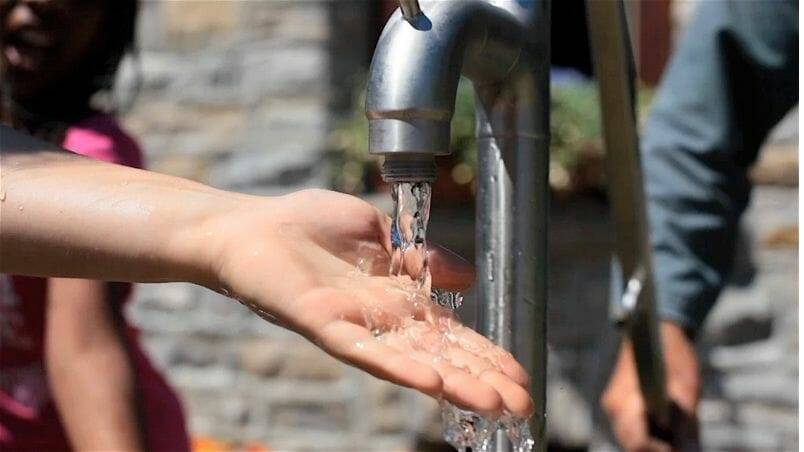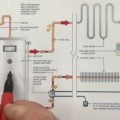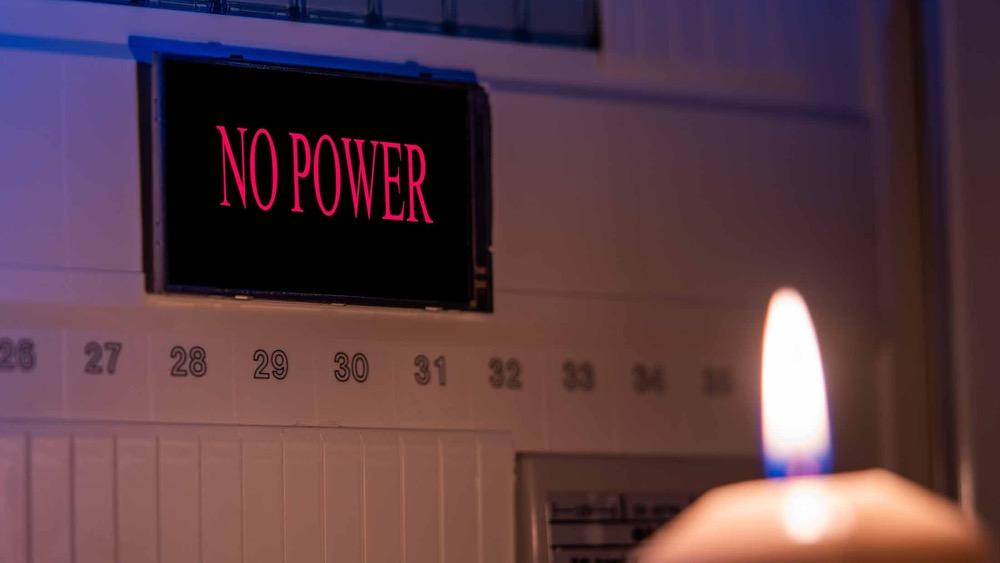Water is one of the essentials of life, but for the 5 million Canadians who rely on private water systems, this also means dependency on an electrical grid that seems to be getting less and less reliable. When weather events and grid overload cause power failures in rural areas, it means no water for drinking, cooking, washing or toilets, but a new breed of hand pump is eliminating this vulnerability. The best of these are made to be installed alongside existing electrical pumps already in a well. If you’re interested in disaster-proofing your private water supply, today’s compact deep well hand pumps are a game changer you need to know about.
Water doesn’t like to be pumped, and the deeper the water is below the surface of the ground, the more reluctant it is to be drawn upwards. In fact, water absolutely refuses to be pumped by suction more than 22 vertical feet upwards. If you try, the suction drops the pressure inside the pipe to the point where the water actually turns to a gas inside the pipe – it “boils” at room temperature. This is the problem that deep well hand pumps were made to solve. Instead of pulling water up by suction, deep well pumps push water upwards. The so-called “pump” you see on the surface with a handle is really just a lever that connects to a rod. The actual pumping action happens in a machined cylinder, way down below the water level in the well. An arrangement like this can push water 300 feet up to the surface, but this also creates challenges. To understand how, you need to know more about how deep well hand pumps work.
Why a Generator Isn’t Always Enough
 Backup generators are a fabulous way to keep your electric domestic water pump working, but only for a while. In an extended power failure – weeks or months – you’ll eventually run out of fuel or motor oil. Your generator might also fail at any time. Either of these things could leave you high and dry. That’s why having a deep well hand pump as part of the mix creates the ultimate in water supply reliability. Grid power for everyday use, generator power for typical blackouts, and a hand pump for long-term outages or as the ultimate backup.
Backup generators are a fabulous way to keep your electric domestic water pump working, but only for a while. In an extended power failure – weeks or months – you’ll eventually run out of fuel or motor oil. Your generator might also fail at any time. Either of these things could leave you high and dry. That’s why having a deep well hand pump as part of the mix creates the ultimate in water supply reliability. Grid power for everyday use, generator power for typical blackouts, and a hand pump for long-term outages or as the ultimate backup.
There are three main parts to any deep well hand pump: the hand-operated mechanism you see sitting on top of the well; the pumping cylinder that pushes water up from below; and a run of rigid pipe and rod that connect the two. As you work the handle up and down, it causes the rod to move the internal piston in the pumping cylinder up and down. As the piston rises, it pushes water up the pipe and out of the spout. The problem with old fashioned deep well hand pumps is the large diameter of the pumping cylinder and the hundreds of pounds of steel pipes necessary to support it. The pumping cylinder takes up all the space in a typical deep well, leaving no room for the electric pump and pipe. It’s either hand pump or electric pump. I learned this lesson the hard way back in 1987. I’d gone to a lot of trouble to find and salvage an old deep well hand pump, I bought 100 feet of 1 1/2” galvanized steel pipe, only to discover that none of this could co-exist with the submersible electric pump I’d planned to install for everyday use. And though the vintage hand pump got shelved, my interest in reliable, electricity-free water did not.
The Joy of Hand Pumped Water
While practicality is the main claim to fame of a hand pump, there’s no denying it’s simply fun to use one. There’s something special about walking up to the pump when you’re thirsty on a hot day, pumping the handle a few times, and having cool water come out into a tin cup you keep nearby. Even when the electricity is working fine, there’s no better way to get a drink of water.
Fast forward 30 years, and the world has gotten better. A massive ice storm in the winter of 1998 had something to do with it. It left parts of northeastern North America without power for three straight weeks, and that eventually got a man named Dave Harbison thinking. He realized that the millions of people who rely on wells for drinking water needed reliable, non-electric access to water during times of trouble. Convenient as electric pumps are, they all stop working without electricity. Harbison is a practical man, so he invented a kind of hand pump that could also be installed alongside an electric setup in the same deep well.
How to Install a Modern Deep Well Hand Pump
The first thing you need before installing any hand operated water pump is information. How deep is the water below the surface of the ground? This determines how much pipe you need to extend the pumping cylinder deep enough below the water line. This level is called the static water level and you can measure it in a couple of ways. Tie a weight to a cord and lower it into the well until you hear the weight hit water. Make a knot in the cord, raise the cord, then measure the depth of cord length. My favourite way to measure static water level is with a laser measuring device. Look down the well, hit the water level with the red laser dot and it will tell you the distance involved right down to the inch. It’s simple.
Next, you need to get your pump hardware. The system I installed in the summer of 2016 is made by Bison (www.bisonpumps.com), the company Dave Harbison started. The kit I bought included food-grade plastic pipes, a 2 1/2” diameter pumping cylinder, and a stainless steel pump body and handle that sits on top of the well. In the case of my own installation, I rerouted the wires feeding the submersible electric pump out the side of the steel well casing instead of through the well cap, as they used to be.
Pumping cylinders have a lug to tie on a safety rope, and that’s the first thing to turn to. Next, fasten your first length of pipe to the pumping cylinder. The stainless steel inner rod threads onto the cylinder, then the plastic pipe threads into the pumping cylinder. Lower this cylinder and first length of pipe into the well, then support the top end with the aluminum installation paddle that comes with the system. Repeat the process with the second length of pipe, threading the steel rods together, then threading the pipe body into the pipe below. In my own case, with a static water level of 55 feet below the surface, I put my pumping cylinder down 90 feet.
Finish up by drilling a 1/8” diameter drainage hole about 5 feet below the top of the topmost pipe for winter use, then install the pump body on top. The drainage hole lets water drain back down from the pump so it doesn’t freeze. The entire installation job takes an hour or two. Watch the process online HERE
Shallower Water, Simpler Pump
If you’re lucky enough to have a well where the water never drops more than 22 feet maximum below the pump body, then you don’t need a deep well hand pump. A shallow well pump that simply draws water up by suction at the surface will work fine. No pumping cylinder and no rods. Just understand that if the water drops down deeper than the magic number of 22 feet, your pump won’t work even if the intake pipe extends into the water. Also, it’s the total vertical rise that counts, not the distance from the ground to the water. If water is sitting 20 feet below soil level and you mount your shallow well pump five feet off the ground, it won’t work.
Freeze-Proofing Hand Pumps
A 1/8” diameter hole is the key to frost-free wintertime operation of your hand pump, and it applies to both deep well and shallow well situations. In the case of a deep well pump, drill this hole in the side of the pipe coming up from the pumping cylinder, about one foot below the deepest level of frost penetration. When you stop pumping, water in the intake pipe will have a chance to drain back down before it freezes. This sounds simple, but it works perfectly.
For a shallow well installation, drill the same 1/8” hole so it’s some distance below the water level in the well. Lift the handle all the way above the pump body and it lets water drain back into the well after use. Just the same, be careful when you go to work the handle of a shallow well pump that has been sitting in cold weather for a while. Residual moisture could have frozen the seals to the inside of the pump. If you force the pump before defrosting, you can tear the internal seals. If wintertime performance is essential, install a deep well hand pump even in a well with a static water level less than 22 feet.
Most of us living in the country aren’t crazy about having our running water dependent on an electrical utility. Good thing it doesn’t have to be that way anymore. Water never tasted so good as when you get it with your two hands muscles, especially during a power failure.
Steve Maxwell and his wife Mary live on a 90-acre modern homestead on Manitoulin Island, Ontario in a stone house they built with local materials beginning in 1985. Steve is Canada’s longest-running home improvement and how-to columnist and editor of Home and Property. He divides his time working on the land, building things large and small, and creating articles and how-to videos that teach sustainable, self-reliant, hands-on living skills.


















